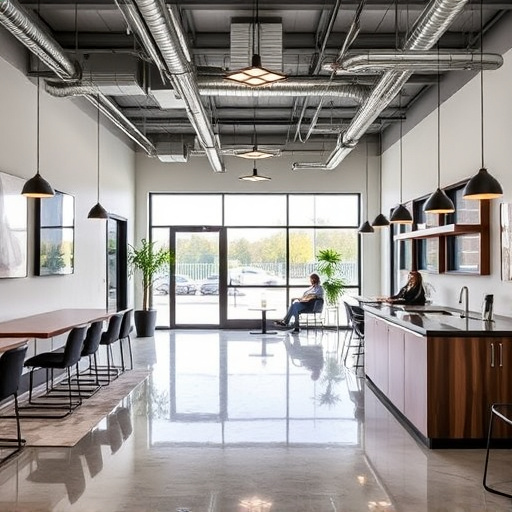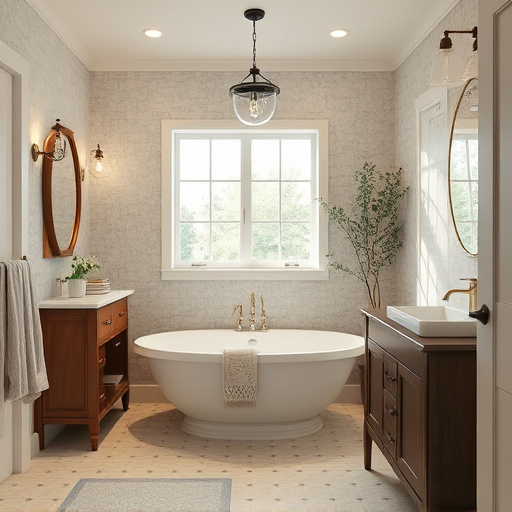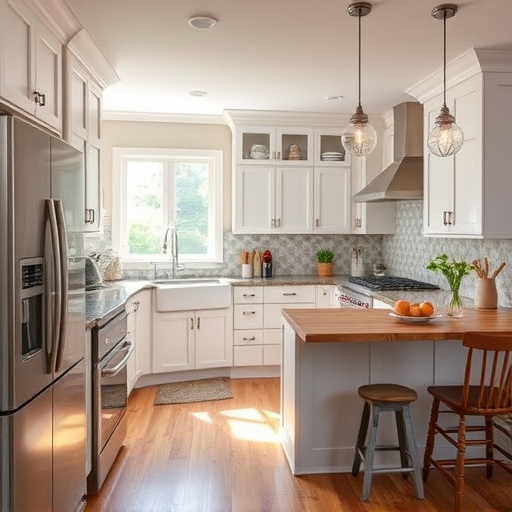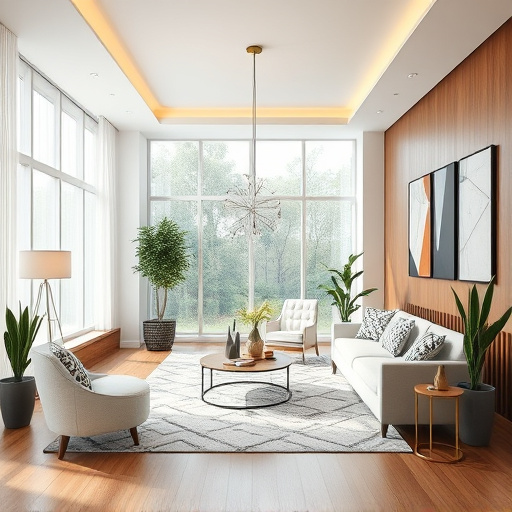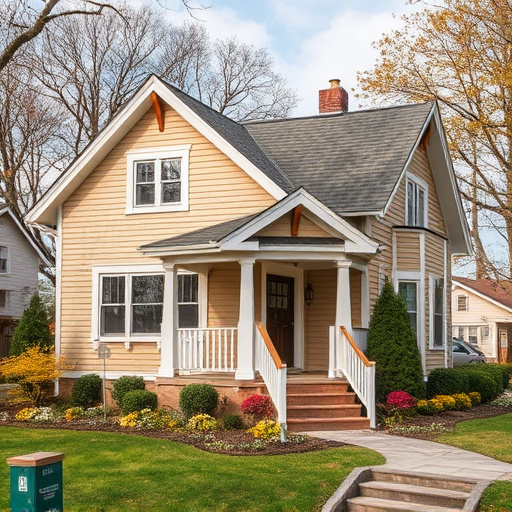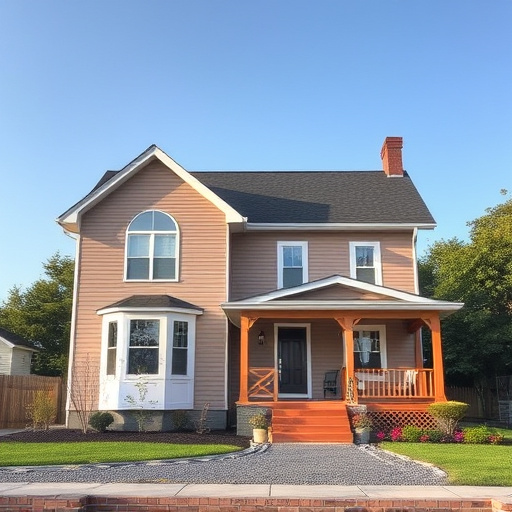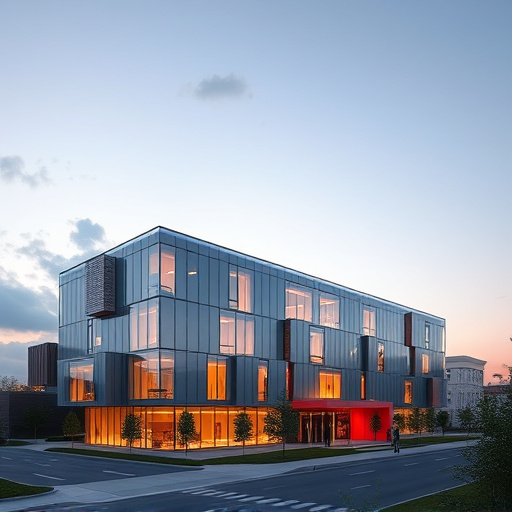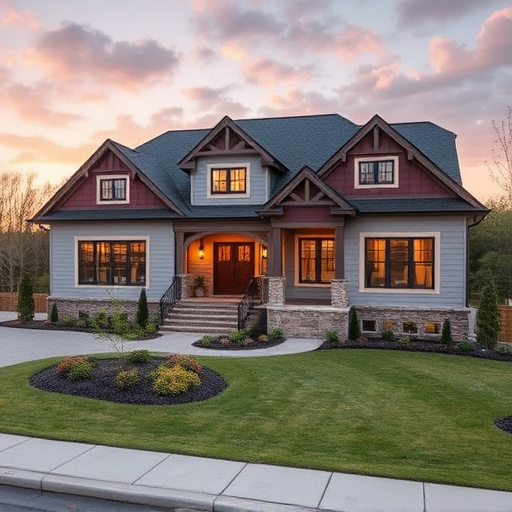When planning a flooring install for interior design, consider material and style tailored to room use, with hardwood for warmth and tile for water-resistant versatility. Color and pattern matching are key for aesthetic harmony, while floor-wall combinations must be balanced during kitchen and bath renovations to create cohesive, visually pleasing spaces.
Matching your flooring install with interior design is an art that can transform any space. This guide delves into the essential elements of harmonizing your floor choices with overall decor. From understanding diverse flooring materials and styles to expertly incorporating color and pattern, you’ll learn how to create cohesive floor-wall combinations. Whether remodeling or designing from scratch, these principles ensure your flooring install becomes a stunning focal point, enhancing your home’s aesthetics and value.
- Understanding Flooring Materials and Styles
- Incorporating Color and Pattern Matching
- Creating Harmonious Floor-Wall Combinations
Understanding Flooring Materials and Styles

When considering a flooring install as part of your interior design project, understanding the materials and styles available is paramount. Different flooring options—from hardwood to tile, carpet to vinyl—offer unique aesthetics and functionality tailored to specific spaces. For example, hardwood floors exude natural warmth and elegance, making them ideal for living rooms and bedrooms, while tile is highly versatile, suitable for kitchens and bathrooms due to its water-resistant properties. Each material comes in a variety of colors, patterns, and textures that can complement or contrast with your existing design elements.
Knowing your style preferences and the intended use of the space guides the selection process. Modern, minimalist spaces may lean towards clean lines and neutral tones, while traditional designs often incorporate rich, bold flooring. Renowned renovation services for kitchen and bath areas frequently emphasize stylish tiles that enhance these high-traffic, moisture-prone rooms. Whether you’re planning a complete bathroom renovations or simply updating your flooring throughout the home, selecting the right material ensures a harmonious blend of form and function that elevates your interior design vision.
Incorporating Color and Pattern Matching
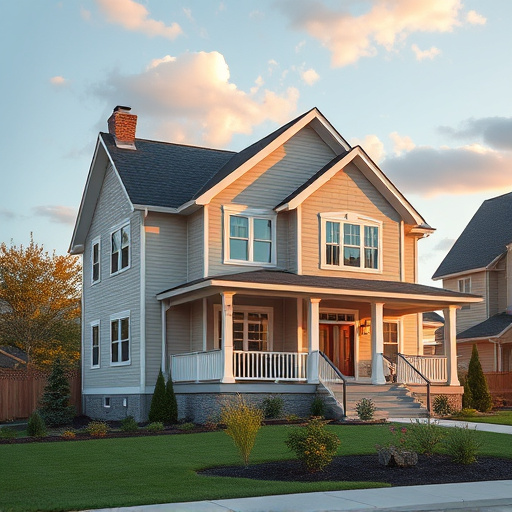
When incorporating a new flooring install into your interior design, color and pattern matching are crucial aspects to consider. Neutral tones like beige, gray, or white offer versatility, easily pairing with various decor styles and allowing for easy transitions between rooms. However, adding pops of color through accent floors or area rugs can enhance visual interest and inject personality into functional spaces.
For a customized home renovation, pattern-rich flooring can tie together different design elements. Geometric patterns or intricate wood grains create depth and dimension, while abstract designs offer a more modern flair. When matching flooring with interior design, aim for harmony without monotony—a balanced approach that elevates both the aesthetic appeal and overall comfort of your living spaces.
Creating Harmonious Floor-Wall Combinations
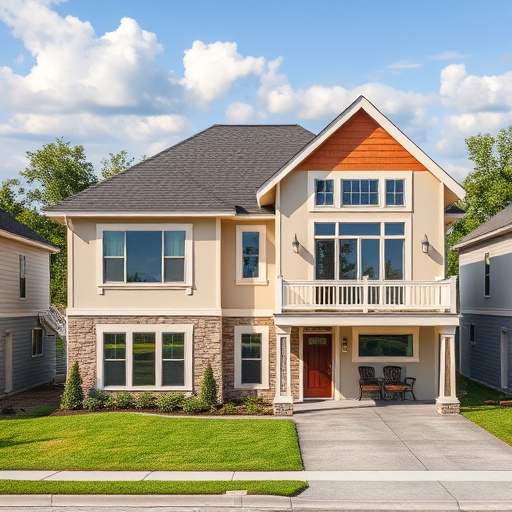
When designing your interior space, especially with kitchen renovations or kitchen and bath projects, creating harmonious floor-wall combinations is key to achieving a balanced and aesthetically pleasing environment. The flooring install should complement the surrounding walls, creating a cohesive look that enhances the overall design. For instance, if you’ve chosen a vibrant tile for your kitchen backsplash, consider a neutral or subtle flooring option to avoid visual chaos. Neutral tones like beige or gray can beautifully set off bold wall colors and patterns, ensuring your floor remains the backdrop rather than overpowering other design elements.
In home improvement services, paying attention to textures is also crucial. For example, if your walls feature textured wallpaper, opt for a flooring material with a similar subtle pattern or a smooth finish to avoid visual conflict. This creates a sense of unity throughout the space, making the area appear more spacious and elegant. Whether it’s hardwood, laminate, or tile, selecting the right flooring install that plays well with your wall treatments will elevate your interior design and make your kitchen and bath renovations truly stand out.
When matching your flooring install with interior design, a thoughtful approach that considers material, color, and harmonious combinations is key. By understanding different flooring materials and styles, incorporating complementary colors and patterns, and creating balanced floor-wall combinations, you can elevate your space into a cohesive and stylish haven. Remember, the right flooring choices can significantly impact the overall ambiance of a room, so take the time to explore options and find what best suits both your design vision and lifestyle needs.







